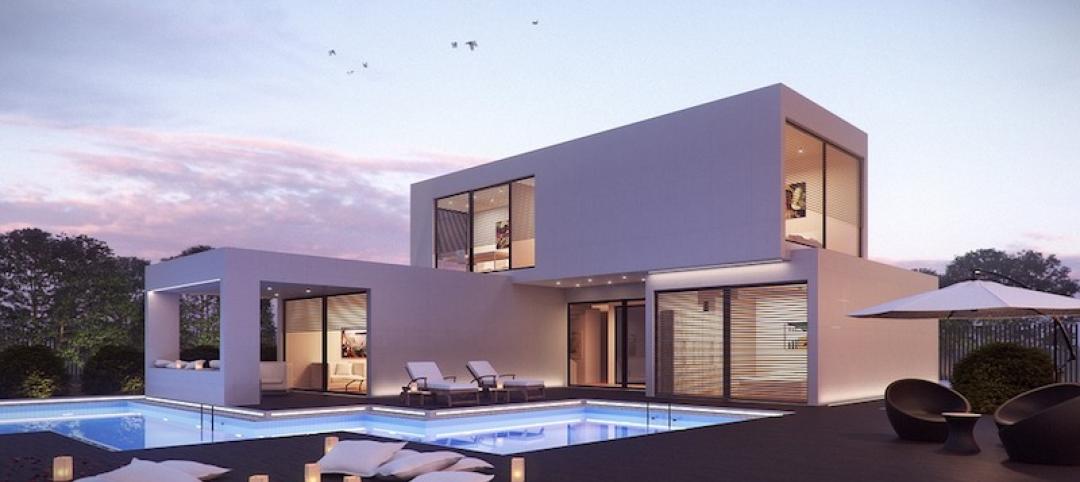 Later this year, the new 459-ft-tall East Side Tower in Berlin, Germany, will be the first building in the world to install an elevator system that travels both vertically and horizontally.
Later this year, the new 459-ft-tall East Side Tower in Berlin, Germany, will be the first building in the world to install an elevator system that travels both vertically and horizontally.
OVG Real Estate and FREO Group, the building’s developers, are working in partnership with thyssenkrupp, one of the world’s largest industrial groups, whose thyssenkrupp Elevator division has devised MULTI, the first cable-free elevator that moves sideways as well as up and down.
Thyssenkrupp unveiled this concept in 2014, and after two-and-a-half years of construction demonstrated MULTI last month at its 807-ft-tall, 12-shaft innovation test tower in Rottweil, Germany. This tower can test elevator speeds up to 22.45 miles per hour. Three of its shafts were designed specifically for certifying the new cable-free elevator system.
 MULTI operates along the same principals as a metro system. Image: Thyssenkrupp
MULTI operates along the same principals as a metro system. Image: Thyssenkrupp
Instead of one cabin per shaft moving up and down, MULTI offers multiple cabins operating in loops, similar to a metro system but inside a building. Its exchange system allows the linear drive and guiding equipment to make 90-degree turns by leveraging the linear motor technology developed for the magnetic levitation Transrapid train. MULTI runs on a multi-level brake system and redundant wireless data and energy management system on the cars.
A short animated video of how this system works can be seen here.
Nearly 200 building industry representatives attended the demonstration, including Antony Wood, Executive Director of the Council on Tall Buildings and Urban Habitat. Wood calls MULTI “perhaps the biggest development in the elevator industry since the invention of the safety elevator some 165 years ago.”

At a time when developers are challenging AEC firms to come up with new and faster ways to transport people in taller buildings. MULTI is promising 50% higher transport capacities. Image: thyssenkrupp
As cities expand and buildings get larger and taller to accommodate more people, planners and architects face significant challenges around moving people comfortably and quickly to their destinations. McKinsey Global Institute estimates that cities will need to construct floor space equivalent to 85 percent of all of today’s residential and commercial building stock by 2025.
To that end, thyssenkrupp claims that MULTI can achieve up to 50% higher transport capacity and reduce peak power demand by as much as 60% when compared to conventional elevator systems.
MULTI requires fewer and smaller shafts than conventional elevators and can increase the building’s usable area by up to 25%. (Thyssenkrupp notes that current elevator-escalator footprints can occupy up to 40% of a high rise building’s floor space, depending on the building height.) The system will also reduce the wait time for a ride to between 15 and 30 seconds.
In April, MULTI took top honors at the 2017 Edison Awards in New York, an annual competition honoring new product and service excellence. The first MULTI system will be installed in the East Side Tower, which is scheduled for completion by 2019. In an interview with Wired magazine, thyssenkrupp's CEO Andreas Schierenbeck said that while MULTI could cost between three and five times more than a standard lift system, the space savings in a large building are “definitely overcompensating the price of the product.”
Related Stories
| Jul 15, 2014
A look into the history of modular construction
Modular construction is more than a century old, and throughout its lifespan, the methods have been readapted to meet specific needs of different eras.
| Jul 14, 2014
Meet the bamboo-tent hotel that can grow
Beijing-based design cooperative Penda designed a bamboo hotel that can easily expand vertically or horizontally.
| Jul 1, 2014
7 ways to cut waste in BIM implementation
Process mapping, split models, and streamlined coordination meetings are among the timesaving techniques AEC firms are employing to improve BIM/VDC workflows.
| Jun 25, 2014
AIA Foundation launches Regional Resilient Design Studio
The Studio is the first to be launched as part of the AIA Foundation’s National Resilience Program, which plans to open a total of five Regional Resilience Design Studios nationwide in collaboration with Architecture for Humanity, and Public Architecture.
| Jun 19, 2014
Singapore's 'Tree House' vertical gardens break Guinness World Record
The high-rise development will have a 24,638-sf vertical garden, breaking a Guinness World Record.
| Jun 18, 2014
Arup uses 3D printing to fabricate one-of-a-kind structural steel components
The firm's research shows that 3D printing has the potential to reduce costs, cut waste, and slash the carbon footprint of the construction sector.
| Jun 12, 2014
Austrian university develops 'inflatable' concrete dome method
Constructing a concrete dome is a costly process, but this may change soon. A team from the Vienna University of Technology has developed a method that allows concrete domes to form with the use of air and steel cables instead of expensive, timber supporting structures.
| May 29, 2014
Wood advocacy groups release 'lessons learned' report on tall wood buildings
The wood-industry advocacy group reThink Wood has released "Summary Report: Survey of International Tall Wood Buildings," with informatino from 10 mid-rise projects in Europe, Australia, and Canada.
| May 27, 2014
Contractors survey reveals improving construction market
The construction industry is on the road to recovery, according to a new survey by Metal Construction News. Most metrics improved from the previous year’s survey, including a 19.4% increase in the average annual gross contracting sales volume. SPONSORED CONTENT
| May 22, 2014
BIM-driven prototype turns data centers into a kit of parts
Data center design specialist SPARCH creates a modular scheme for solutions provider Digital Realty.

















